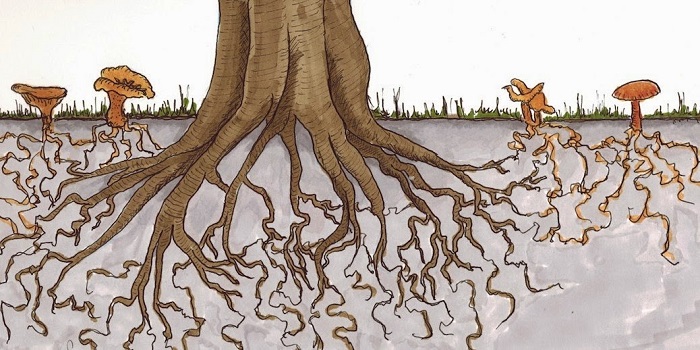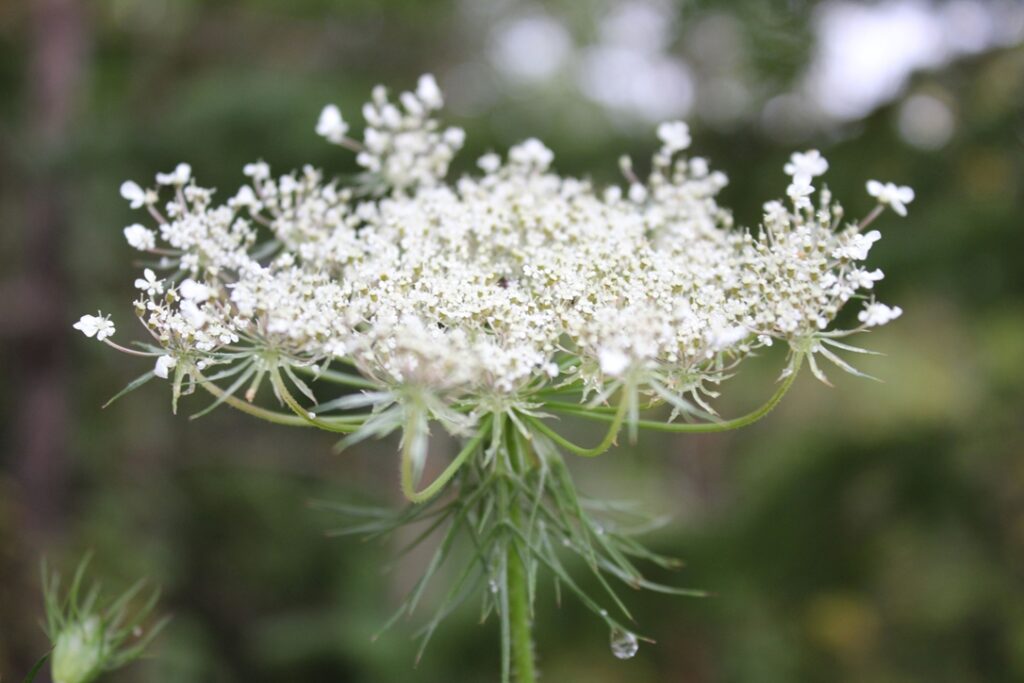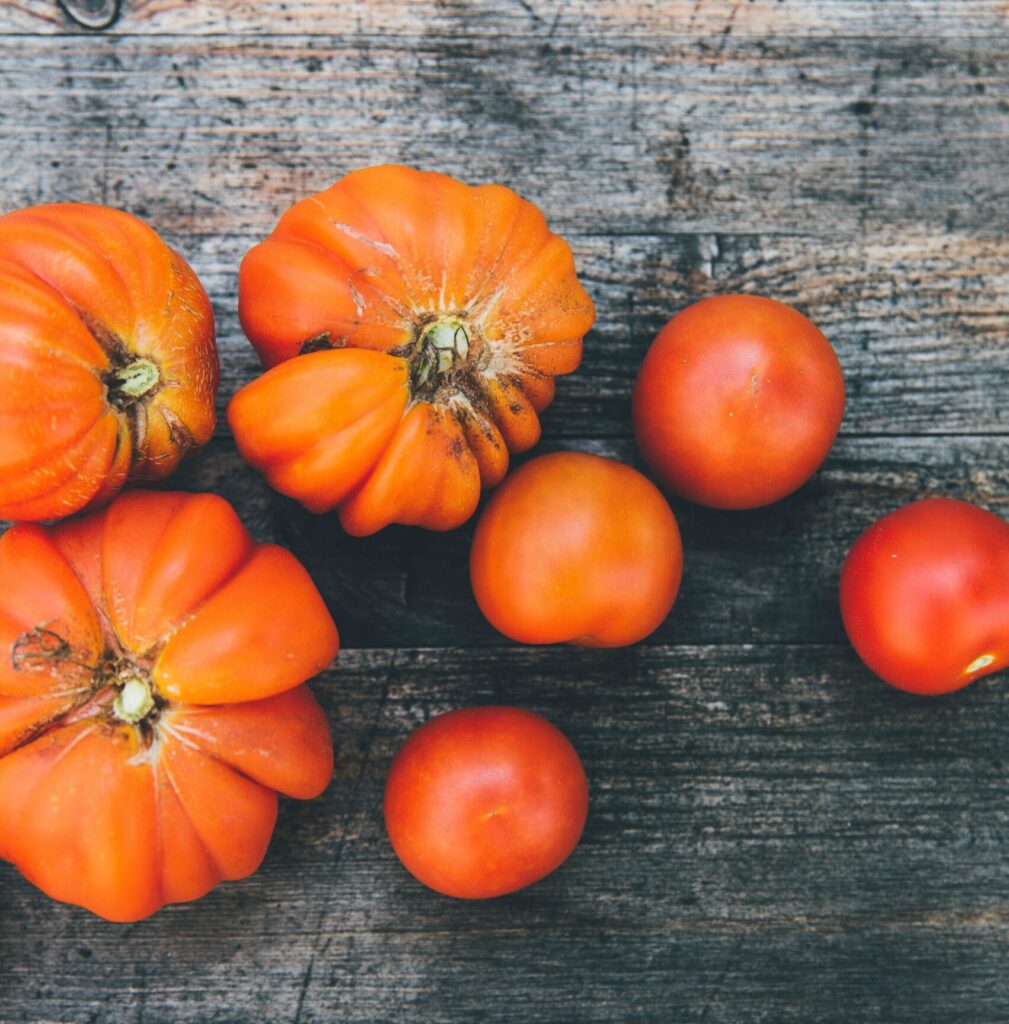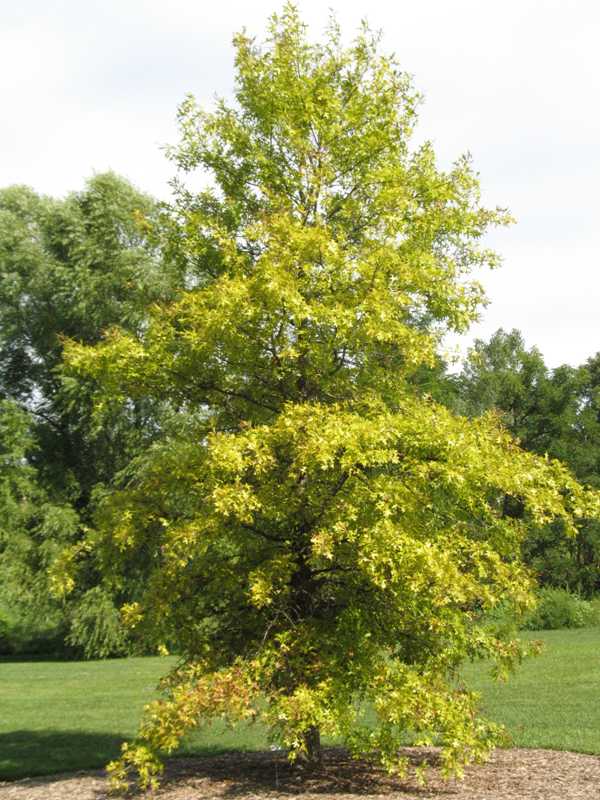
A trip to the garden centre is my favourite way to brighten a day. There’s always something blooming that begs to come home with me. But that happy feeling turns to confusion when I head to the soil section. There are so many choices and all claim impressive results. To add to the confusion, several of the soils contain mycorrhizal fungi. But what exactly is this scary sounding ingredient?
The white branching filaments of the hyphae grow from the brown roots of the plant, extending the reach of the root zone. Photo credit beechwoodtrees.co.uk
Why Gardeners Care About Mycorrhizal Fungi
Mycorrhizal fungi is a fungus that interacts with plants to form a relationship in which both the plant and the fungus benefit (Dunn). This association is called a symbiotic relationship. Most plant roots stretch only a modest length into the soil and they can quickly deplete the nutrients around them (Lowenfels, 135). But the branching filaments or hyphae of mycorrhizal fungi extend far beyond the plant’s reach. These hyphae bring nutrients and water to the roots in exchange for the carbohydrates produced by the plants (Reid 178). Together, the plants and the fungi feed each other.
Having a healthy fungi population is like having a personal chef for your plants. Plants release sugars from their roots to attract the fungi it needs (Lowenfels, 136). In return, these fungi produce a web that can reach far beyond the roots, breaking down organic matter and transporting the nutrients to the roots. As they work, the fungi produce gummy substances that can make the soil better at absorbing water and withstanding erosion (Lowenfels, 196). The symbiotic relationship between plants and fungi is definitely a win-win situation.
How Can We Help (or hurt) Our Soil?
There are several things that we can do to encourage the mutual growth of plants and fungi. Fungi need the same things that plants need – food, water, and air. Using compost in our gardens, ensuring that there is adequate water and avoiding walking on garden areas are good practices for our plants and our fungi. We can harm mycorrhizal fungi by using certain pesticides and by allowing our soil to become compacted. Tilling the soil is also harmful to fungi. It breaks up the branching filaments, destroying its soil network (Palvis).
Healthy natural soils are full of microbes, and while it doesn’t hurt to add more, it is often not necessary (Lowenfels, 220). Unless you are planting in a sterilized potting mix, most natural soils will be teaming with fungi. What we can do is care for our soil by protecting our fungi. And when we care for our fungi, plants and fungi can take care of each other.
Resources Cited
Cover Photo Credit – Plantae.org – Plant Science Research Weekly
Dunn, Bruce et al. “Mycorrhizal Fungi.” Oklahoma State University Extension
Lowenfels, Jeff. Teaming with Nutrients: The Organic Gardner’s Guide to Optimizing Plant Nutrition. Timber Press, 2013.
Pavlis, Robert. Understanding Soil. March 2021.
Reid, Keith. Improving Your Soil: A Practical Guide to Soil Management for the Serious Home Gardener. Firefly Books, 2014.





About The Author: Kim Nikkel
From kiwis to apples, Kimberly grows fruit holistically in her garden just outside of London, Ontario. One of her favourite parts of gardening is watching the bees poke their heads into the masses of flowers that surround her fruit trees.
More posts by Kim Nikkel